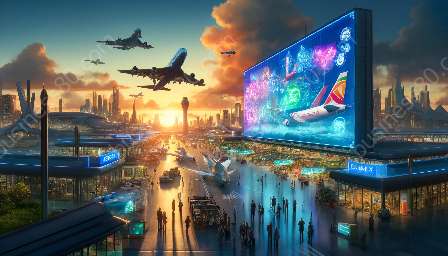Introduction to Aircraft Design
Aircraft design is a multifaceted and intricate field that plays a pivotal role in the evolution and advancement of aviation and aerospace & defense industries. It involves the application of engineering principles, materials science, aerodynamics, and advanced technologies to create cutting-edge aircraft that are efficient, safe, and innovative.
The Importance of Aircraft Design in Aviation
Aircraft design is integral to the aviation industry as it directly impacts the performance, safety, and efficiency of aircraft. It influences aspects such as fuel efficiency, aerodynamics, structural integrity, and passenger comfort, thereby shaping the overall experience of air travel.
Key Components of Aircraft Design
Aerodynamics: Aerodynamics is a fundamental aspect of aircraft design, focusing on the study of the motion of air and its interaction with moving objects, such as aircraft. Designers use aerodynamic principles to optimize the shape and structure of an aircraft to enhance its performance and reduce drag.
Structural Design: The structural design of an aircraft is crucial for ensuring its strength, durability, and overall safety. It involves comprehensive analysis and engineering of the materials and components that comprise the aircraft's frame and body.
Propulsion Systems: The propulsion system plays a critical role in aircraft design, encompassing engines, fuel systems, and related technologies. Designers strive to develop efficient and reliable propulsion systems that propel the aircraft forward while minimizing fuel consumption and emissions.
Avionics and Control Systems: Avionics and control systems are key components of modern aircraft design, encompassing electronic systems, flight instruments, communication systems, and autopilot technologies. These systems are essential for navigation, communication, and ensuring the safe operation of the aircraft.
Innovations in Aircraft Design
Aircraft design continues to evolve rapidly, driven by technological advancements and the pursuit of greater efficiency, sustainability, and safety. Designers are incorporating advanced materials, such as composites and lightweight alloys, to reduce weight and improve fuel efficiency. Additionally, the integration of electric and hybrid propulsion systems is paving the way for more sustainable and environmentally friendly aircraft designs.
The Role of Aircraft Design in Aerospace & Defense
In the aerospace & defense sector, aircraft design underpins the development of military and defense aircraft, as well as space vehicles. The stringent requirements of defense applications demand innovative and specialized design approaches to achieve superior performance, stealth capabilities, and mission-specific functionalities.
Career Opportunities in Aircraft Design
Aircraft design offers diverse and rewarding career opportunities for engineers, designers, and technologists. These roles encompass various disciplines, including mechanical engineering, aerodynamics, materials science, and avionics, and provide the chance to contribute to groundbreaking advancements in aviation and aerospace & defense.
Conclusion
The dynamic field of aircraft design is at the forefront of shaping the future of aviation and aerospace & defense. By continually pushing the boundaries of innovation, safety, and efficiency, aircraft designers play a crucial role in creating the next generation of aircraft that will redefine the skies and transform air travel worldwide.


